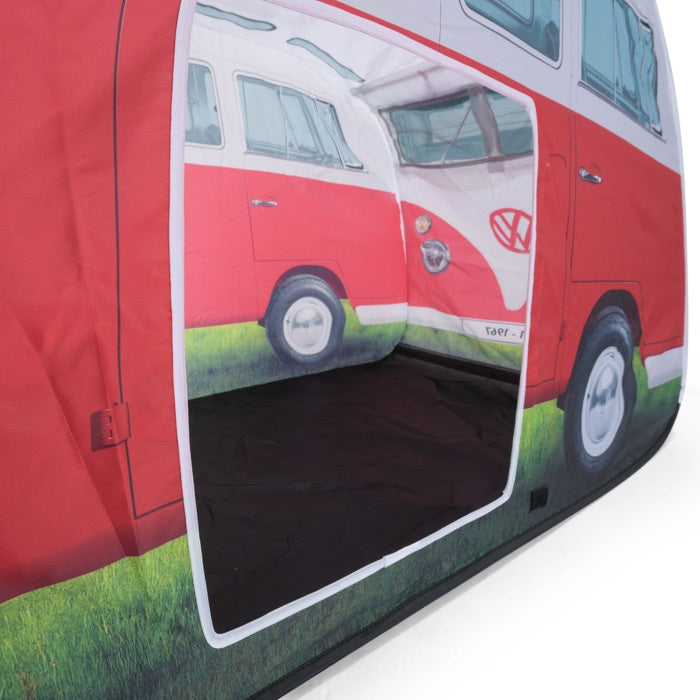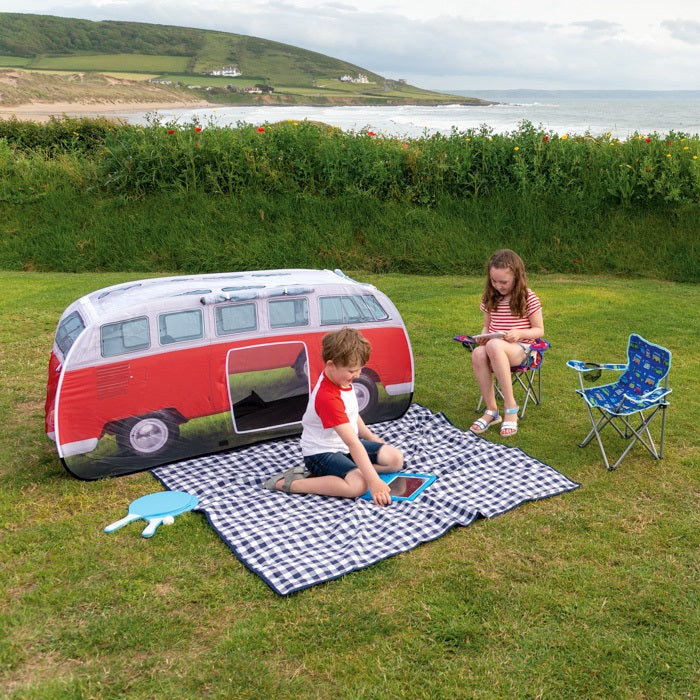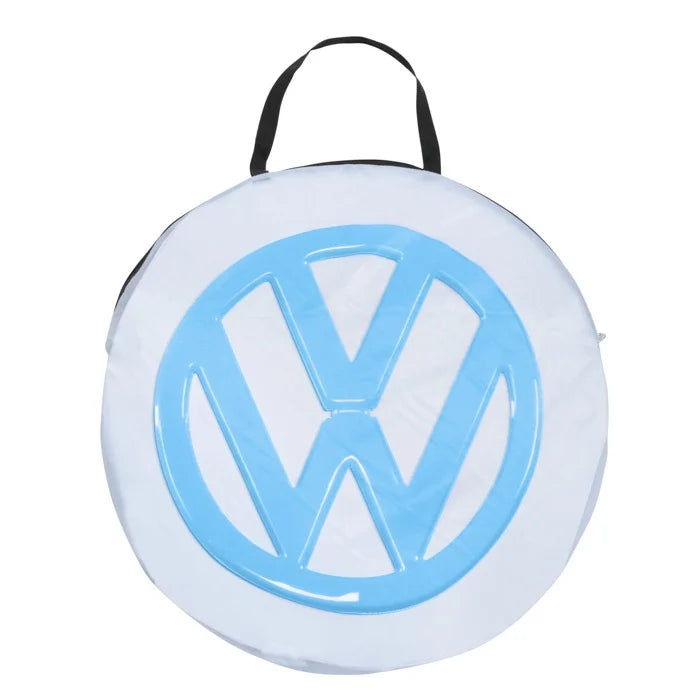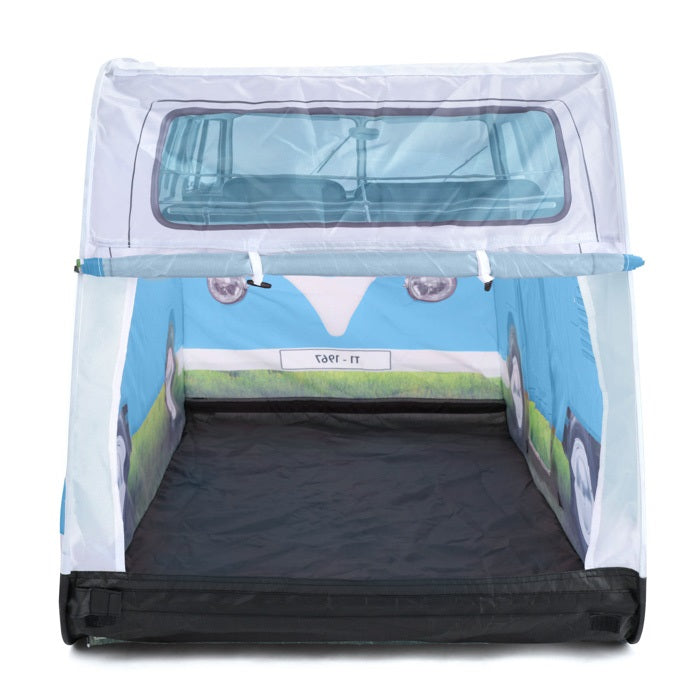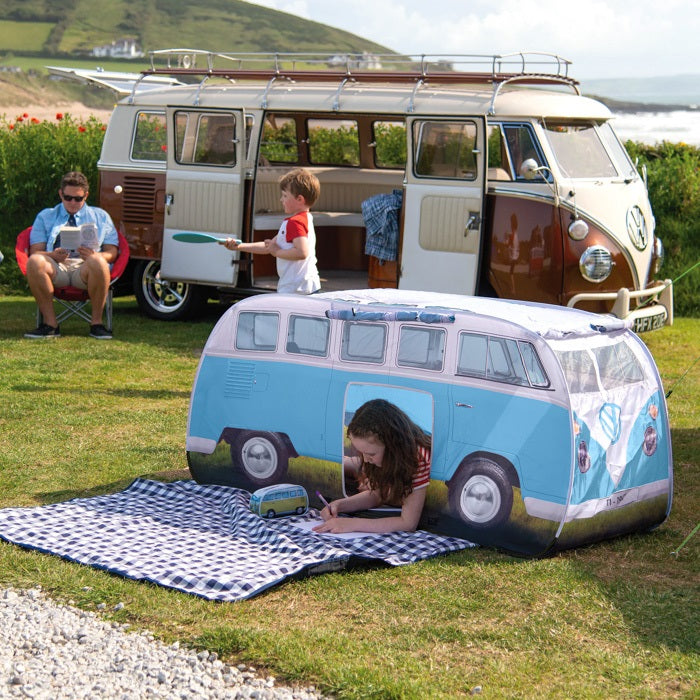VW Volkswagen CamperVan Kids Pop Up Tent
VW Volkswagen CamperVan Kids Pop Up Tent
Bajas existencias
No se pudo cargar la disponibilidad de retiro
VW Volkswagen CamperVan Kids Pop Up Tent
The Official Volkswagen Kids Camper Van Tent is based on the original T1 camper van, the most iconic van of all time.
Check out our full range of VW Officially Licensed gear here
Perfect for indoors and outdoors, this mini tent version of the 1965 classic split-screen classic is able to accommodate up to three children.
This mini VW Tent comes with side and rear doors just like the real thing! It even has an opening safari window.
- SET UP IN SECONDS: with the tent pop up construction and take down just as easily, so they can start playing in their very own campervan play tent with ease
- UPF50+ PROTECTION AND FIRE RETARDANT: keeps your child safe from harmful sun rays and fire risks so they can play safely in the tent.
- FITS UP TO 3 KIDS: thanks to the spacious size (W54cm x L165cm x H77cm) which can be used both indoors and outdoors such as at beaches, parks, gardens and living rooms
- FOLDS AWAY TO A COMPACT SIZE: of L57cm x H12cm for easy storage and is made from long lasting 150DX150D poly Oxford material with PU coating
- AWARD WINNING OFFICIAL VOLKSWAGEN LICENSED ACCESSORIES: with iconic 1965 VW Camper Van design; a great gift for campervan lovers! (Right Start Awards, 2020)
The History Of The VW Campervan
The Volkswagen T1 Campervan, also called the Type 2 or Transporter, began production in 1950. It followed the success of the VW Beetle, or Type 1. Dutch importer Ben Pon sketched the original design in 1947. He envisioned a compact, practical van for transporting goods and people. Volkswagen engineers refined his idea into a rear-engine, rear-wheel-drive vehicle. The T1 became a cultural icon and symbol of freedom and exploration.
The T1 had a distinctive split front windshield, earning it the nickname “Splittie.” It used an air-cooled, four-cylinder engine located at the rear. This setup saved space and offered excellent traction. Early models had just 25 horsepower, but they were durable and simple to maintain. The T1 was produced at Volkswagen’s Wolfsburg plant until 1956, then in Hanover, Germany.
Volkswagen marketed the T1 as a multi-use vehicle. It came in many body styles: panel van, kombi, microbus, and camper. The camper variant was developed with Westfalia, a German company that specialized in conversions. Westfalia transformed the basic van into a mobile home with beds, storage, and a fold-out table. These camper conversions helped define the T1 as a symbol of adventure.
In the 1960s, the T1 became popular with the counterculture movement. Hippies embraced the van for its practicality and charm. It was affordable, easy to repair, and ideal for road trips. Brightly painted T1s became a familiar sight at music festivals and protests. The van’s reputation grew as a symbol of peace and rebellion.
Production of the original T1 continued until 1967 in Germany. Afterward, Volkswagen introduced the T2, a more modern version. However, the T1 lived on in other parts of the world. Brazil produced the T1 until 1975, with some minor changes. These included different engines and revised suspension systems. Some Brazilian versions continued to look like the original.
The T1’s legacy endured beyond its production run. In the decades since, it has become a valuable classic vehicle. Enthusiasts around the world restore and collect T1s. Parts can still be found or remanufactured. Many vintage campervans are lovingly preserved and taken on long journeys. Some are even used as rentals or mobile businesses.
The T1’s design influenced generations of vans. Its boxy shape and flat floor made it extremely versatile. The split-screen look remains iconic, and several modern retro-styled vans pay homage to it. Volkswagen itself revisited the concept with the electric ID. Buzz, launched in the 2020s. This new model channels the spirit of the T1 while embracing new technology.
In many ways, the T1 Campervan represents freedom on four wheels. Its simple design allowed people to travel widely and live simply. Whether at a surf beach or in a mountain pass, the T1 served as a mobile basecamp. Its enduring appeal speaks to its smart engineering and cultural impact.
Today, the VW T1 is more than just a van. It’s a piece of living history. From modest beginnings, it grew into a beloved symbol of independence, community, and the open road.
Share









